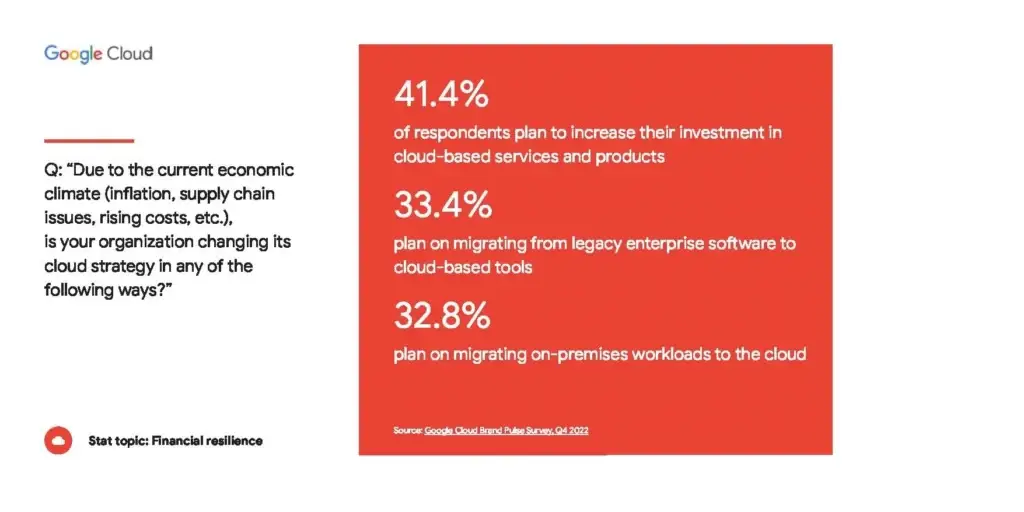Unraveling Cloud Computing: Exploring Its Evolutionary Essentials

Introduction
In the past decade, there has been remarkable advancement in the realm of information and communication technology, especially concerning internet connectivity. What started as a humble dial-up internet has now elevated to a lightning-speed broadband connectivity. This transformation has brought huge benefits to the people, societies and businesses, and has taken human innovation further. In this article of tech ideas, we will discuss how broadband technology has evolved to integrate itself seamlessly into ground-breaking cloud computing.
Origins of Broadband
As previously noted, not too long ago, accessing the internet meant enduring the cacophony of dial-up modems and the frustration of sluggish webpage loading. In those days, digital data from the internet, converted into analog signals, used to be modulated and transmitted over typically copper telephone lines. The frequency range or bandwidth of such transmission was limited and so was the internet speed. With the introduction of optical fiber cables, broadband internet also emerged. Broadband capitalized on the capacity of optical fiber cables, constructed from transparent plastic or glass, to convey digital data as light pulses in digital signal form. This advancement facilitated higher frequency transmissions and larger bandwidth, resulting in faster internet speeds and the simultaneous transmission of multiple signals.
Cumulative Effects of Broadband
Endowed with higher speeds and stable connections, broadband opened up a new vista of possibilities in the field of information, communication and entertainment technology. This led to the emergence of new activities such as media streaming, downloading large files, and engaging in real-time communications. It served as a catalyst for the proliferation of new applications and services that required increased bandwidth and continual innovation. Broadband essentially laid the foundation stone of cloud computing.

The Rise of Virtualization
The rise of internet speeds thanks to broadband improvements gave rise to the notion of virtualization of machines. By optimizing resource allocation, virtualization enabled the simultaneous operation of multiple operating systems and applications on a single physical server. This technological upgradation was a turning point in the evolution toward cloud computing.
Transformation to Cloud Computing
Virtualization quietly transformed the digital space by introducing new approaches to data storage and processing on a larger scale. Before long, innovators recognized the synergistic possibilities between broadband connectivity and augmented virtual machines. The essence of this realization was that the unprecedented speed and stability of broadband can make it possible for people and businesses to do computing remotely.
This led to the emergence of cloud computing. Essentially, cloud computing provides a scalable and flexible centralized computer architecture (server, storage, processing, software, etc) that allows users to access resources and services on demand through broadband internet. It eliminates the necessity for on-site infrastructure and offers cost-saving benefits by charging only for the duration of service utilization. Cloud computing also supports accessibility and collaboration. It has redefined the way we receive and consume technology. Services of cloud computing come in three main categories:
Software as a service: SaaS offers ready-made software (such as email services, CRM tools, etc) for end-users who need not develop any new applications. Ordinary users and professionals may access this category of service.
Infrastructure as a service: IaaS provides the basic infrastructures like servers, processors, memory, storage and networks for remote computing. This classification caters primarily to both businesses and everyday users.
Platform as a service: In addition to servers, processors, memory, storage, and networks, PaaS offers middleware, databases, and development tools. Developers utilize this service to construct and launch applications within a comprehensive service environment. Middleware software functions as a bridge between various applications. Evidently, this service category is suitable mainly for advanced developers.
Diversities in Cloud Computing
Cloud computing continues its evolution, propelled by technological advancements worldwide. In response to the need of adaptability, it has taken different forms, but it remains the same in terms of the basic concept. The primary forms of cloud computing include::
Edge Computing: This has emerged with the rise of the Internet of Things (IoT), which demands real-time processing capabilities. Edge computing brings the cloud nearer to the edge devices (such as security cameras, autonomous vehicles, factory monitoring devices, etc). Consequently, there will be reduced latency typically linked with transmitting data to distant servers. The bulk of the data from these IoT devices is processed on a nearby local server.
Serverless Computing: This involves the use by the developers of a complete cloud environment rather than a dedicated cloud server. Developers need not manage servers. They write functions and execute them in cloud environments, instead of executing the entire application in one particular server. They include services like Amazon Web Services, Microsoft Azure, Google Cloud Platform, and so on. It is not literally serverless but server resources are indirectly accessed through the above-mentioned environments. The developers do not have to pay for any idle capacity of a server but for time and resources used from the cloud environments.
Machine Learning and AI: Cloud providers have democratized the realm of machine learning and AI. They are giving the users access to algorithms and standard models. These services empower users to parse through data, automate processes, enhance customer interactions. And seamlessly integrate AI capabilities without the burdensome groundwork. This is indeed disseminating the seeds of the 4th Industrial Revolution to the levels of businesses and individuals.
Transition to Cloud Computing Age
Despite the magnitude of the project of transition to cloud computing, the trend is quite positive. In a Google survey of business and IT leaders as early as the last quarter of 20221, 41.4% of respondents expressed their plans to increase the use of cloud-based services and products, and 33.4% of them contemplated migrating from legacy software to cloud-based tools. Cloud computing has already made a visible footprint on the technology landscape of the world. However, the transition to cloud computing must take into account some of the concerns associated with it, such as (i) Guaranteeing security and privacy; (ii) Upholding the quality of cloud services; (iii) Ensuring the reliability of broadband internet services; (iv) Fostering skill development initiatives; (v) Harnessing synergy with 5G technology; (vi) Implementing an appropriate regulatory regime; (vii) Assessing the impact on the computer hardware industry and sustainability; and (viii) Promoting inclusivity..

Conclusion
With progress in its technology, as well as its wider adoption, cloud computing is soon going to be an inseparable part of our lives. The scope of cloud computing actually transcends the gamut of technology. If responsibly adopted, cloud computing will empower societies and businesses to make our world a better place to live in. The transformative journey from broadband to cloud computing inspires us to reflect on what is up there beyond the cloud. And to prepare ourselves for an even more astonishing ‘shape of things to come’. For a more in-depth exploration of the future of cloud computing, we invite you to explore a selection of resources available on Amazon.
Note
It may be noted that, as an Amazon Associate, we may earn from qualifying purchases. If you buy through the links, we may earn a commission at no extra cost to you.

